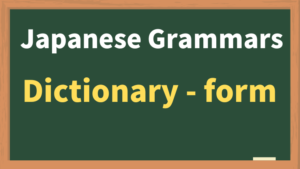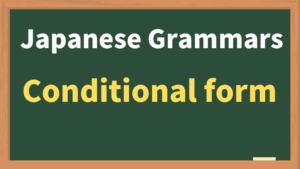
Contents
1. What is the Potential Form?
The potential form is used to express that someone “can” or “is able to” do something. It’s a useful conjugation for talking about abilities, possibilities, and whether certain actions are feasible.
2. How to Form the Potential Form
The method for forming the potential form varies by verb group. Here’s how to create the potential form from both the dictionary form and the ます form, for those who may have learned the polite form first.
1. From the Dictionary Form:
- Group 1 (U-Verbs):
- Replace the final "u" sound with an "e" sound + る.
- Examples:
- のむ → のめる (can drink)
- かく → かける (can write)
- はなす → はなせる (can speak)
- Group 2 (RU-Verbs):
- Simply replace る with られる.
- Examples:
- たべる → たべられる (can eat)
- みる → みられる (can see)
- Group 3 (Irregular Verbs):
- する becomes できる (can do).
- くる becomes こられる (can come).
2. From the ます Form:
- Group 1 (U-Verbs):
- Remove ます and change the “i” sound before ます to the corresponding “e” sound + ます.
- Examples:
- のみます → のめます (can drink)
- かきます → かけます (can write)
- はなします → はなせます (can speak)
- Group 2 (RU-Verbs):
- Remove ます and add られます.
- Examples:
- たべます → たべられます (can eat)
- みます → みられます (can see)
- Group 3 (Irregular Verbs):
- します becomes できます (can do).
- きます becomes こられます (can come).
Using both methods helps accommodate learners who began with the polite form, allowing them to recognize the pattern and convert verbs into the potential form.
3. Sample Sentences
Here are some sample sentences to show how the potential form is used in various contexts:
- Group 1 (U-Verbs):
- のめる (can drink): コーヒーを のめますか?
(Can you drink coffee?) - かける (can write): かんじが かけるようになりました。
(I’ve learned to write kanji.)
- のめる (can drink): コーヒーを のめますか?
- Group 2 (RU-Verbs):
- たべられる (can eat): からい たべものが たべられません。
(I can’t eat spicy food.) - みられる (can see): あの えいがは こどもでも みられます。
(Even children can watch that movie.)
- たべられる (can eat): からい たべものが たべられません。
- Group 3 (Irregular Verbs):
- できる (can do): きょうの しゅくだいは ひとりで できました。
(I was able to do today’s homework by myself.) - こられる (can come): あした、ともだちが こられるそうです。
(My friend says they can come tomorrow.)
- できる (can do): きょうの しゅくだいは ひとりで できました。
4. Common Uses of the Potential Form
The potential form is widely used to express both abilities and possibilities. Here are some common scenarios:
- Expressing Personal Abilities:
The potential form is often used to say what a person can or cannot do.- Example: にほんごが はなせます。 (I can speak Japanese.)
- Indicating Feasibility in Situations:
It’s also used to discuss whether something is possible or feasible.- Example: この えいがは だれでも みられます。 (Anyone can watch this movie.)
- Expressing Physical/Environmental Capabilities:
Often used to describe situations where conditions allow for an activity.- Example: てんきが よいので やまが みられます。 (The weather is clear, so the mountain is visible.)






